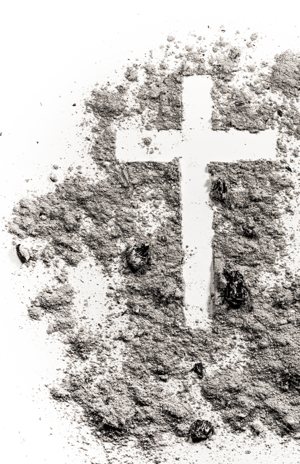
Ash Wednesday draws one of the largest turnouts of any Mass throughout the year. While its practice has popularity — including Catholics’ selfies with ashes on foreheads posted prominently on social media — the observance of Ash Wednesday calls for something deeper than receiving ashes. Father Tom Margevicius, director of the Archdiocese of St. Paul and Minneapolis’ Office of Worship, said “a return to ashes represents my worthlessness without God” — and the realization of being a creature instead of the creator.
“All sin has the nature of rebellion against God, trying to exalt ourselves above God — ‘I want to be in charge of my life,’” Father Margevicius said.
He said the ashes are a “tangible experience that calls to mind a deeper meaning” of death, eternity, salvation and man’s place before God.
“You walk out of church getting something. What you walk out with this Ash Wednesday is a reminder of your own mortality,” Father Margevicius said. “That desire to have something is part of the human longing for reality. Humans need to make symbols for meaning for life.”
As an ash distributor at the Basilica of St. Mary in Minneapolis, Maureen Bourgeois is among those commissioned to make that ash cross on the foreheads of the people who attend Ash Wednesday Mass. An artist, she said she doesn’t focus on making a perfect cross, but on “being in connection” with the person in front of her.
She appreciates the communal aspect of Ash Wednesday, where Catholics come together in humility before God, hearing the words from Genesis 3:19, “Remember you are dust, and to dust you shall return.”
“That hopefully helps people to be mindful that we’re in union together,” said Bourgeois, 41. “Despite our differences, we are so similar and … we all share a connection, and hopefully [the ash cross] instills a remembrance in people that we are connected.”
Bourgeois said it’s also reaffirming to be in public after Mass and see others wearing ashes, too.
Father Margevicius noted that Ash Wednesday’s Gospel focuses on the importance of sacrifice — making offerings to God for his glory instead of being seen. However, today’s challenge lies in visibly witnessing to Christ in a world that has lost interest in him, he said.
Rick Erisman, a parishioner of St. Joseph in Miesville, prioritizes attending Ash Wednesday Mass before work. He said it led to conversations with co-workers when he was working in a secular environment.
“I always used it as a tool for evangelism,” said Erisman, who now runs a Catholic life coaching business.
Ashes are among the Church’s “sacramentals” — defined by the Catechism of the Catholic Church as “sacred signs which bear a resemblance to the sacraments,” but which are not sacraments themselves. Unlike sacraments, anyone can present themselves to receive ashes, even non-Catholics. And ashes are distributed to people of any age, including infants.
Kathleen O’Hern, an elementary religion teacher at St. Agnes School in St. Paul, emphasized the importance of preparing even young students for Lent. In a Feb. 12 lesson with second graders, she taught them about the sorrowful mysteries of the rosary, the Stations of the Cross, the importance of making a sacrifice during Lent and why church decorations are simplified for the season.
O’Hern, who teaches religion for grades one to three, also taught the students that the ashes come from palms used the previous year in the Palm Sunday liturgy.
She asked the class about the meaning of the words “you are dust.”
“God created with dust,” said student Anastasia Matelski, after being called on to answer.
Erik Russek, faith formation director and safe environment coordinator at St. Maximilian Kolbe in Delano, said students in the faith formation program attend the Ash Wednesday liturgy in lieu of classes that night.
“We just make sure that they’re all there in their classes at Mass,” he said. “The whole church is full of youth, which is wonderful.”
Teaching about Lent and emphasizing sacrifices made during the season also is a priority for the program’s catechists, Russek said.
Eighth-grader Jacob Hauer, a member of St. Maximilian Kolbe, where he attends faith formation classes, said wearing ashes makes him “proud to be Catholic.”
“I really look forward to getting the ashes on my forehead just because of the meaning of it,” Hauer said.
He said he gave up Snapchat last year for Lent because he felt addicted to it. The “grace of the ashes” carried him through, and he didn’t want to resume using the social media platform after Lent, he said.
“It felt amazing,” Hauer said.



